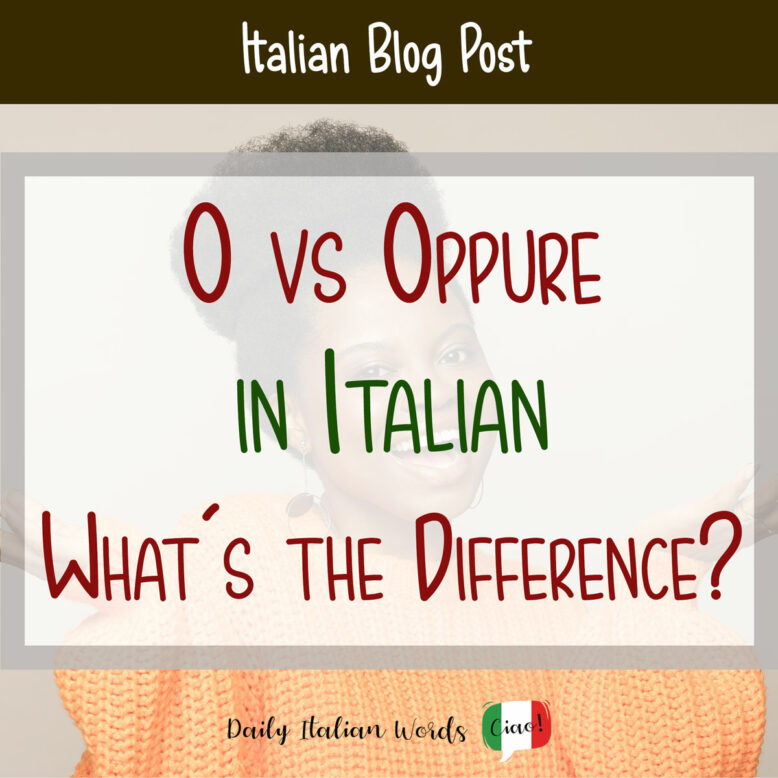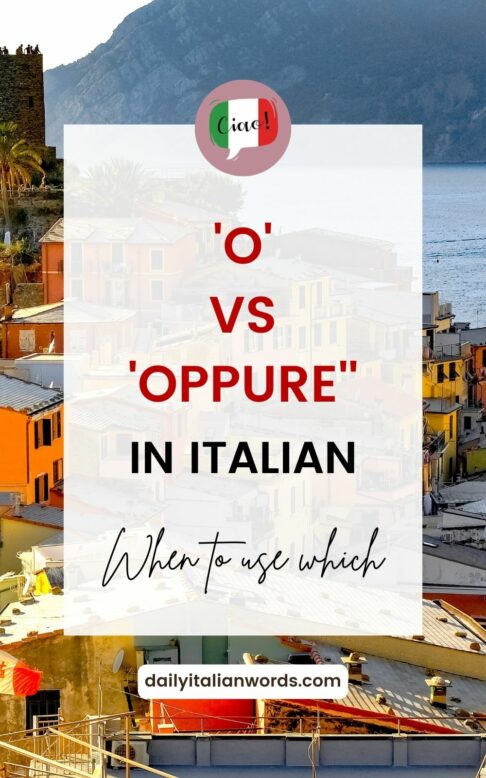When we are offered a choice between two alternatives, we use the sweet and simple conjunction “or” in English.
In the Italian language, there are two possible translations for “or” – o and oppure. But what is the difference between them?

While both present a choice between two alternatives, we find it helpful to think of oppure, which is made up of two words – o (or) and pure (even/also) – as a slightly more emphatic version of o on its own.
For example, in the following sentence, oppure can be used instead of o to emphasise the speaker’s sneaky suspicion that the other person may prefer a coffee. Had we used o instead, the statement would have come across as more neutral.
Vuoi un tè, oppure preferisci un caffè?
Do you want tea, or would you prefer a coffee?
O and oppure can also appear together in phrases featuring the “either-or” construction. In the sentence below, the first o corresponds to “either” whereas oppure represents “or”.
What’s important to remember is that the first o in the “either/or” construction can never be replaced by oppure, whereas oppure can be replaced by o no matter where it appears.
O mangiamo qui, oppure andiamo a casa.
O mangiamo qui, o andiamo a casa.Oppure mangiamo qui, o andiamo a casa.Oppure mangiamo qui, oppure andiamo a casa.
Either we eat here, or we go home.
In some cases, oppure can be translated as “otherwise” or “alternatively”. When used in this way, it becomes a synonym for se no or altrimenti.
Devo sbrigarmi, oppure perdo l’autobus.
I have to hurry, otherwise I’ll miss the bus.

Heather Broster is a graduate with honours in linguistics from the University of Western Ontario. She is an aspiring polyglot, proficient in English and Italian, as well as Japanese, Welsh, and French to varying degrees of fluency. Originally from Toronto, Heather has resided in various countries, notably Italy for a period of six years. Her primary focus lies in the fields of language acquisition, education, and bilingual instruction.


